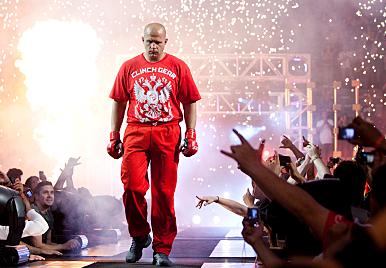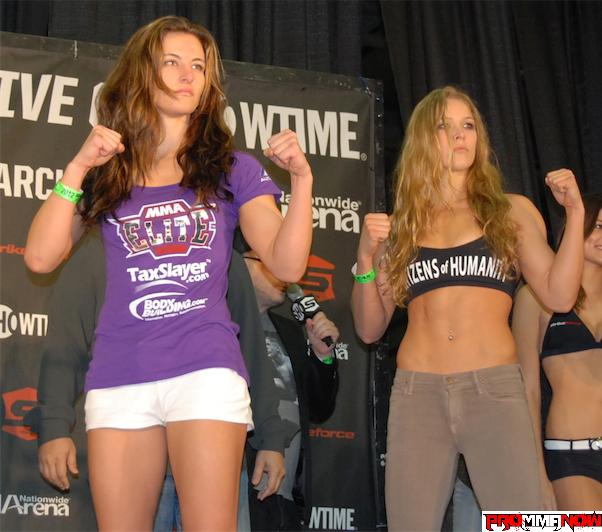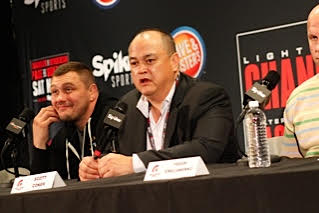
Strikeforce was a prominent mixed martial arts (MMA) promotion that played a significant role in shaping the sport. Founded in 1985, Strikeforce enjoyed a successful run before being acquired by the Ultimate Fighting Championship (UFC) in 2011. Throughout its history, the promotion showcased some of the sport’s biggest stars and produced thrilling fights that captivated fans around the world.
Strikeforce was initially established as a kickboxing promotion by Scott Coker in the mid-1980s. However, it wasn’t until 2006 that the organization transitioned to MMA, becoming a major player in the industry. The move proved to be a pivotal decision that would define the promotion’s future.
Under Coker’s leadership, Strikeforce gained recognition for its commitment to showcasing both established fighters and emerging talent. The promotion quickly attracted attention by assembling a roster of talented fighters from various disciplines, including Brazilian Jiu-Jitsu, Muay Thai, boxing, and wrestling. This diverse talent pool contributed to the promotion’s reputation for producing highly competitive matchups.
Strikeforce’s breakthrough came in 2009 when they signed a groundbreaking broadcast deal with the premium cable network Showtime. This partnership significantly expanded the promotion’s reach and allowed it to compete with other major promotions, including the UFC. With Showtime’s support, Strikeforce began to broadcast its events to a wider audience, effectively increasing its fan base and exposure.
One of the most defining moments in Strikeforce’s history came with the signing of former Pride Fighting Championships heavyweight champion Fedor Emelianenko. Emelianenko was widely regarded as one of the greatest fighters in MMA history, and his presence in the promotion drew immense attention and credibility. Strikeforce capitalized on Emelianenko’s star power by matching him against top-tier opponents, including former UFC heavyweight champions Andrei Arlovski and Fabricio Werdum.
Strikeforce’s commitment to women’s MMA also played a crucial role in its success. The promotion’s female divisions, particularly the women’s bantamweight division, gained significant traction and popularity. Strikeforce’s signing of notable female fighters such as Gina Carano, Cris Cyborg, and Ronda Rousey helped pave the way for women’s MMA to gain wider recognition and eventually find a home in the UFC.
In 2010, Strikeforce took another leap forward when they held their first major event in a cage, as opposed to the traditional ring. The change in the fighting environment mirrored the industry shift towards the cage format, popularized by the UFC. This move not only brought Strikeforce in line with the contemporary standards of the sport but also enhanced the viewing experience for fans.
However, despite its successes, Strikeforce faced challenges as well. One of the most significant hurdles was the unfortunate loss of key fighters due to injuries or contract disputes. These departures included the likes of Frank Shamrock, Nick Diaz, and Alistair Overeem. Nevertheless, the promotion managed to adapt and continued to deliver exciting matchups that kept fans engaged.

The turning point for Strikeforce came in 2011 when Zuffa, the parent company of the UFC, acquired the promotion. The acquisition was part of the UFC’s strategy to consolidate the MMA market and eliminate potential competition. While the move effectively brought Strikeforce under the UFC’s umbrella, the promotion continued to operate independently, at least initially.
Under Zuffa’s ownership, Strikeforce experienced a period of transition. Several Strikeforce fighters, including stars like Ronda Rousey and Daniel Cormier, eventually made their way to the UFC, while others continued to compete under the Strikeforce banner. Despite ongoing events and matchmaking, it became increasingly clear that Strikeforce’s days as a standalone promotion were numbered.
In 2013, the UFC announced that Strikeforce would be disbanded after a final event, effectively marking the end of an era for the promotion. Strikeforce: Marquardt vs. Saffiedine took place on January 12, 2013, in Oklahoma City, Oklahoma. Tarec Saffiedine emerged as the last welterweight champion, defeating Nate Marquardt in the main event. The event served as a fitting finale for Strikeforce, showcasing the talent and excitement that had characterized the promotion throughout its history.
Following the dissolution of Strikeforce, many of its fighters were integrated into the UFC roster, solidifying the UFC’s dominance in the MMA landscape. The acquisition of Strikeforce helped the UFC expand its talent pool and further establish its position as the premier MMA organization globally.
Strikeforce’s impact on the sport of MMA cannot be overstated. It played a vital role in popularizing the sport and elevating its profile, especially during a time when MMA was still growing and searching for mainstream acceptance. The promotion’s ability to secure lucrative television deals, sign high-profile fighters, and stage compelling matchups helped it gain a dedicated fan base and establish itself as a force to be reckoned with.
Furthermore, Strikeforce’s commitment to showcasing women’s MMA was groundbreaking and instrumental in the growth and recognition of the women’s divisions in the sport. The organization provided a platform for female fighters to shine and gain the recognition they deserved, ultimately paving the way for the inclusion of women’s divisions in the UFC.
Strikeforce’s contribution to the evolution of MMA extended beyond its fighters and events. It introduced innovative ideas and formats, such as the Strikeforce Heavyweight Grand Prix tournament, which featured a bracket-style competition to determine the top heavyweight fighter in the promotion. This format added an element of excitement and unpredictability, captivating fans and creating memorable moments in the process.
Moreover, Strikeforce’s adoption of the cage as the fighting environment reflected the changing landscape of MMA and helped standardize the use of the cage across different promotions. The shift from the traditional ring to the cage offered distinct advantages, such as improved visibility for spectators and enhanced safety measures for the fighters.
While Strikeforce ultimately became absorbed by the UFC, its impact on the sport continues to be felt. Many former Strikeforce fighters went on to achieve great success in the UFC, further solidifying the legacy of the promotion. Names like Daniel Cormier, Luke Rockhold, Gegard Mousasi, and Ronaldo Souza transitioned seamlessly and left their mark in the UFC, showcasing the talent nurtured in Strikeforce.

In conclusion, Strikeforce was a pioneering MMA promotion that left an indelible mark on the sport. Its transition from kickboxing to MMA, partnership with Showtime, and commitment to women’s MMA propelled it to the forefront of the industry. Strikeforce’s ability to assemble top talent, deliver thrilling matchups, and introduce innovative concepts contributed to the growth and popularity of MMA as a whole. Although it may no longer exist as a standalone promotion, its legacy lives on through the fighters it showcased and the impact it had on shaping the landscape of mixed martial arts.
